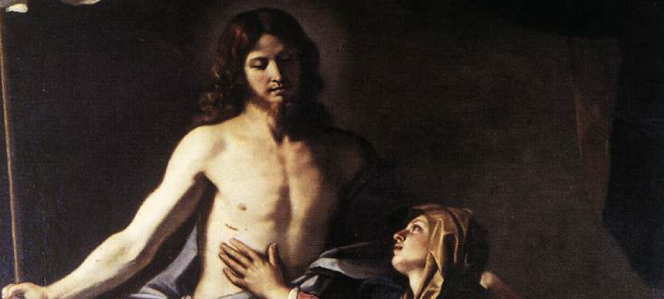The visible universe, then, is itself destined to be transformed, so that the world itself, restored to its original state, facing no further obstacles, should be at the service of the just, sharing their glorification in the risen Jesus Christ. (Catechism #1047)
This astonishing statement from the Catechism is the Catholic view of heaven. Our universe, maybe ~40 billion light years wide and ever-expanding, filled with literally unimaginable wonders, is destined to be transformed, restored and placed at the service of redeemed humanity to the eternal glory of God in the Age to Come.
Everything from quasars to quails, supernovas to supermarkets, the most insignificant thoughts to the grandest deeds will somehow all be caught up into paschal fire of Christ’s risen glory, purified, transfigured, made new. Every time I read, for example, Romans 8:18-30 or 1 Corinthians 3:21-23; 15:20-28—my mind blows a gasket.
What does a transfigured cosmos even look like? Well, if the Book of Revelation is any indication, certainly infinitely more wild than this already-wild universe is! It’s no wonder St. Paul, when he was asked by the Corinthians what the resurrected body would be like, simply said, “Fool!” (1 Cor. 15:36)
Often we will speak in our Catholic lingo about “getting to heaven.” While this is certainly not wrong, it can be misleading. Not long ago, I was at a party and a man I was speaking to said, “I can’t wait to die and get out of this shell [his body] and leave this world behind for heaven.” The implication? This world is, at best, a holding tank where we prove ourselves worthy of heaven, but in the end earth is to be cast off and left behind for something far better.
The problem? The Risen Christ begs to differ. What Jesus showed us in raising to new life his brutalized mortal body, making it the cornerstone of the new creation, is that heaven is only heaven when it is wedded to earth and the two become one. Heaven was made for earth and earth for heaven. Mary herself, first fruit of Christ’s redeeming work, was assumed body and soul into heaven.
And the body is not merely a shell that “I” somehow inhabit. Rather, the body is essential to my identity as an ensouled body and an embodied soul. St. Thomas Aquinas famously said of the disembodied soul, “the soul is not I.”
Jesus rising in his historical body, still marked by the open wounds, sealed this truth as an eternal truth. The Resurrection means that, in the World to Come, whether in heaven or hell, we will receive our bodies again, transformed, restored and, for the saved, placed at the service of the eternal glory of God.
The new creation is the old creation raised with Christ into eternal glory.
But the wedding of heaven and earth is not just a future promise that we passively salute from afar. It is to be a present reality, an event happening here and now, set in motion by Christ’s Passover from death to life and detonated in this world by the coming of the Pentecostal Spirit. In Jesus, heaven and earth are perfectly wed now as a new creation. And in us who are his pilgrim Body the heavenly wedding unfolds until the end of time, when God will at last be “all in all” (1 Cor. 15:28).
This is precisely what we pray for and consent to every time we pray the Our Father:
Hallowed be thy name
Thy kingdom come
Thy will be done,
on earth as it is in heaven
So the meaning and value of this life for humanity is colossal. The mission of the Church is not just to save “souls.” We daily bear on our shoulders the weight of the entire “visible universe” that awaits our priestly “Yes” for it to be consecrated and transfigured in the Kingdom of Heaven, offered up by us as a living sacrifice to God in Christ through the eternal Spirit.
How? So much to say! But as I have gone long, let me be as brief as possible. To that end, I will quote that timeless sage, Belinda Carlisle:
Ooh, baby, do you know what that’s worth?
Ooh, heaven is a place on earth
They say in heaven love comes first
We’ll make heaven a place on earth
Ooh, heaven is a place on earth
That’s it. How do you consecrate and transfigure this creation into the new creation? Do this:
I give you a new commandment,
that you love one another.
Just as I have loved you,
you also should love one another. (John 13:34)
Such a love is the “freedom of the children of God” that creation awaits:
the creation itself will be set free
from its bondage to decay
and will obtain the freedom
of the glory of the children of God. (Rom. 8:21)
Which calls to mind a note Br. Jude Lasota, B.H. once sent my wife shortly after she had our second child: “The love you and Tom have for those children redeems the whole universe. So it all matters.”
